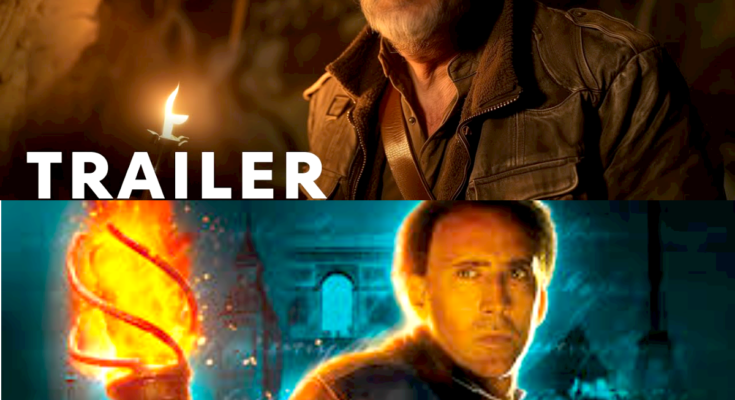National Treasure 3 (2025) marks the return of Nicolas Cage as the intrepid historian and treasure hunter Benjamin Gates. Directed by Jon Turteltaub, this long-awaited installment continues the thrilling adventures that blend American history with hidden secrets and mysterious conspiracies.
Spoilers ahead:
The movie picks up several years after the events of National Treasure: Book of Secrets. Benjamin Gates is now a seasoned historian, but he’s been living a quieter life, focusing on preserving historical artifacts and spending time with his family. However, his peaceful existence is interrupted when he discovers a cryptic letter hidden in the archives of the Library of Congress. The letter hints at a lost treasure tied to one of America’s most iconic symbols: the Statue of Liberty.
Intrigued, Ben starts to investigate, uncovering a series of clues that suggest the Statue of Liberty holds a secret more significant than anyone ever imagined. This revelation pulls him back into the world of treasure hunting, reuniting him with his old team—Riley Poole (Justin Bartha), his tech-savvy sidekick, and Abigail Chase (Diane Kruger), his love interest and fellow historian.
As they dig deeper, they discover that the treasure is connected to a secret society that has existed since the founding of the United States. The society’s members included some of America’s most famous figures, all of whom played a role in hiding this treasure to protect it from falling into the wrong hands.
The villain this time is a powerful, shadowy figure with ties to the government, who will stop at nothing to uncover the treasure for his own gain. In a race against time, Ben and his team must decipher historical puzzles and navigate dangerous traps set by the society to protect the treasure.
The film culminates in a high-stakes chase through New York City, where the final clue is hidden within the Statue of Liberty itself. The movie ends with Ben discovering the treasure—a cache of invaluable historical documents that could change the course of American history—and once again choosing to protect the truth rather than exploit it.



